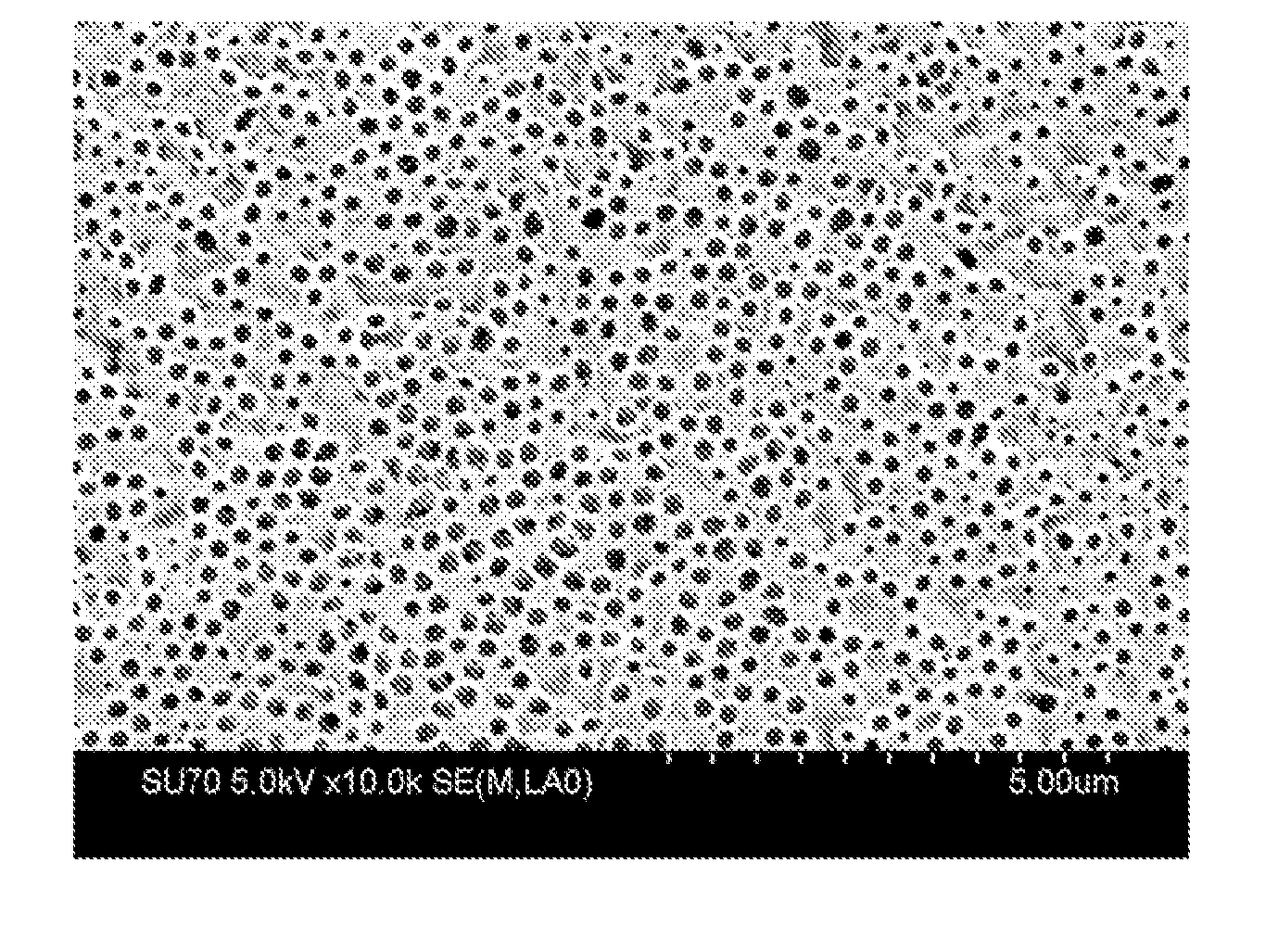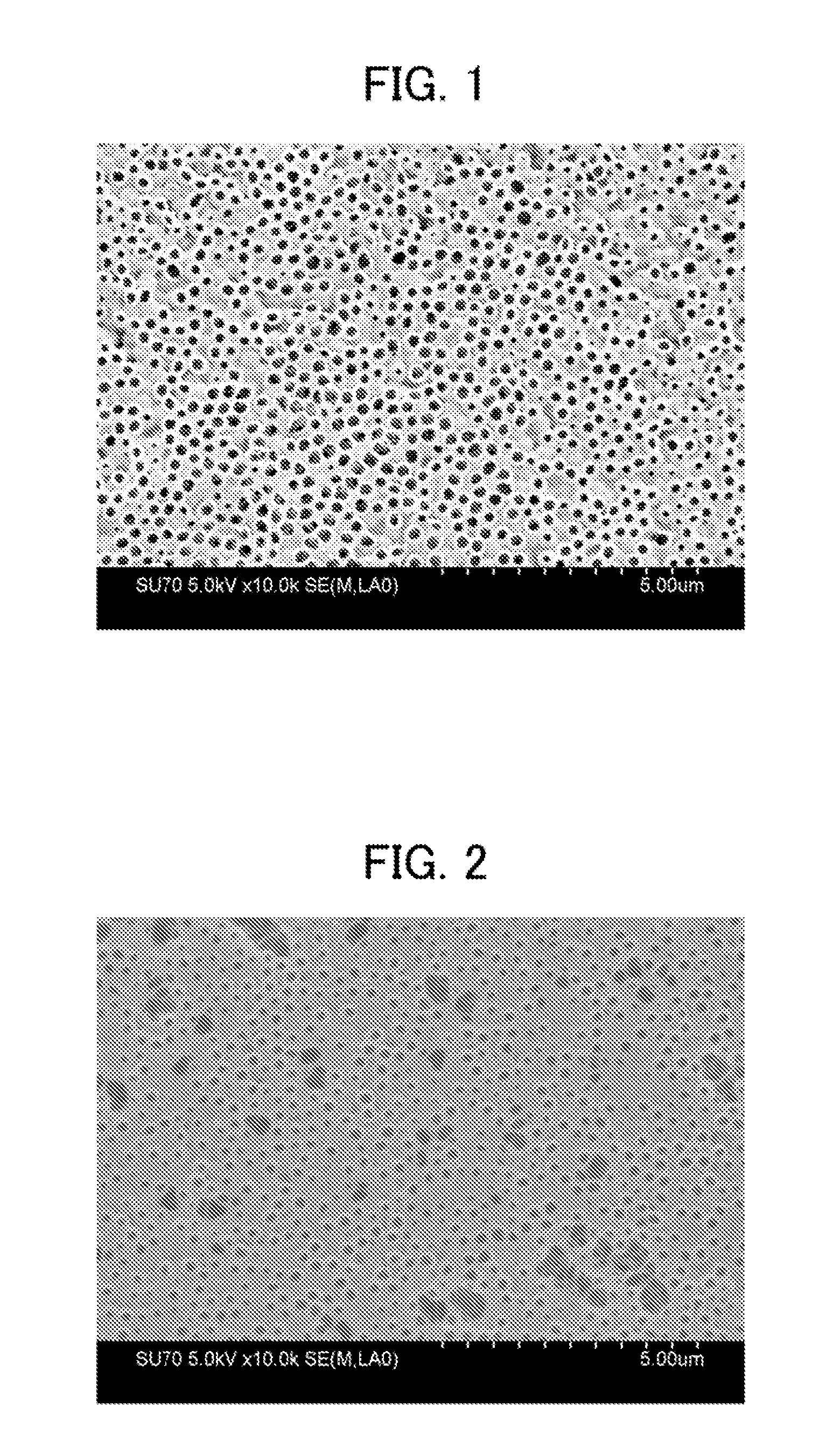Method for producing porous polyimide film, porous polyimide film and separator using same
a technology of porous polyimide and polyimide film, which is applied in the direction of fuel cell details, synthetic resin layered products, electric vehicles, etc., can solve the problems of insufficient uniformity and density of pores formed in conventional polyimide film, short circuit of battery, etc., and achieve the effect of improving the electrical characteristics of the battery
- Summary
- Abstract
- Description
- Claims
- Application Information
AI Technical Summary
Benefits of technology
Problems solved by technology
Method used
Image
Examples
example 1
Preparation of Varnish
(1) First Varnish
[0096]The tetracarboxylic dianhydride (6.5 g), the diamine (6.7 g), and the organic solvent (30 g) were put into a separable flask equipped with a stirrer, a stirring blade, a reflux condenser, and a nitrogen gas inlet tube.
[0097]Nitrogen was introduced into the flask through the nitrogen gas inlet tube to provide a nitrogen atmosphere in the flask. Subsequently, the tetracarboxylic dianhydride and the diamine were reacted at 50° C. for 20 hours by stirring the contents in the flask to prepare a polyamide acid solution. To the resulting polyamide acid solution was added 75 g of silica (1) as fine particles at a volume ratio between the polyamide acid and the fine particles of 22:78 (mass ratio: 15:85), followed by stirring to prepare a first varnish.
(2) Second Varnish
[0098]A second varnish at a volume ratio between the polyamide acid and the fine particles of 28:72 (mass ratio: 20:80) was prepared as in (1), except that 53 g of silica (2) as fi...
example 2
[0109]A porous polyimide film was formed as in Example 1 except that the volume ratio between the polyamide acid and the fine particles of the first varnish was adjusted to 34:66 (mass ratio: 25:75) and that the volume ratio between the polyamide acid and the fine particles of the second varnish was adjusted to 40:60 (mass ratio: 30:70). The surface on the side to which the first varnish was applied, which would be brought into contact with the negative electrode, was observed with an SEM. FIG. 3 shows the surface condition in Example 2.
[0110]It was demonstrated that a button battery according to Example 1 of the present invention shows a high capacity retention ratio at a high rate and has excellent electrical characteristics, compared to those of Comparative Examples. This is presumed to be caused by that a larger number of pores can be formed in the surface on the negative electrode side by forming two layers and to improve the Li ion mobility, compared to those in Comparative Ex...
example 3
[0112]A porous polyimide was formed as in Example 1 except that the thickness of the film formed from the first varnish was about 1 μm and that the total thickness of the unburned composite film was about 20 μm.
PUM
| Property | Measurement | Unit |
|---|---|---|
| porosity | aaaaa | aaaaa |
| volume fraction | aaaaa | aaaaa |
| volume fraction | aaaaa | aaaaa |
Abstract
Description
Claims
Application Information
 Login to View More
Login to View More - R&D
- Intellectual Property
- Life Sciences
- Materials
- Tech Scout
- Unparalleled Data Quality
- Higher Quality Content
- 60% Fewer Hallucinations
Browse by: Latest US Patents, China's latest patents, Technical Efficacy Thesaurus, Application Domain, Technology Topic, Popular Technical Reports.
© 2025 PatSnap. All rights reserved.Legal|Privacy policy|Modern Slavery Act Transparency Statement|Sitemap|About US| Contact US: help@patsnap.com



